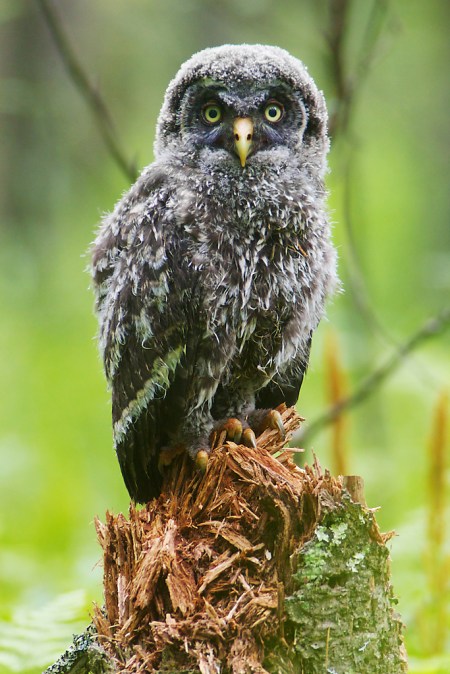The Barred of Aitkin County & the End of Winter?
 Mississippi River at Palisade, Minnesota.
Mississippi River at Palisade, Minnesota.
With temperatures predicted to be in the 50s (!) on Monday March 7th, I decided to take a cruise around Carlton and Aitkin Counties and see what I could find. The woods were still covered in snow, but the fields were pretty bare. I also included photos from March 11, 12 and 13 here. [UPDATE 3-14: We may be getting 2 to 7 inches of snow this week! Maybe the “End of Winter” title was a bit premature!]
 Barred Owl about to pounce.
Barred Owl about to pounce.
While cruising an Aitkin County bog for Great Gray Owls, I found this very focused Barred Owl. It was about to pounce on an unseen mice or vole along the road ditch.
[Canon 7D with Canon 400mm f5.6 lens; 1/400 second at f5.6, ISO 800; braced on car window frame]

[Canon 7D with Canon 400mm f5.6 lens; 1/640 second at f5.6, ISO 800; handheld]
 Barred Owl in golden light.
Barred Owl in golden light.
The Barred did indeed pounce, but alas, came up empty-taloned. No meal for this guy/gal this morning. Normally nocturnal, the Barred Owl will hunt in the daylight when very hungry…and at this time of winter, many northern critters can be fighting hunger.
[Canon 7D with Canon 400mm f5.6 lens; 1/2000 second at f5.6, ISO 800; braced on car window frame]
 Horned Larks [Aitkin County]
Horned Larks [Aitkin County]
One of the first spring migrants in northern Minnesota is the early-nesting Horned Lark. Often showing up in late February or early March they are usually the first songbird migrants. Trumpeter Swans, Bald Eagles, Killdeer, American Kestrels, Canada Geese are other early movers in the Northland. Horned Larks nest in farm fields and short grass pastures.
 Trumpeter Swans
Trumpeter Swans
A flock of 18 Trumpeter Swans rest in a central Minnesota field recently bare of snow.
 Canada Goose
Canada Goose
Crex Meadows near Grantsburg, Wisconsin is a major staging area for Sandhill Cranes in spring and fall (April and October) so I thought with the early spring that maybe, possibly some may have returned. But no. The only migrants amongst the completely frozen marshes was this Canada Goose and about 30 or 40 Trumpeter Swans, some of whom had already paired up and staked out nests.
 Winter Stonefly
Winter Stonefly
On warm March days, the Winter Stoneflies (Allocapnia species) often emerge from cold, clean fast flowing creeks and rivers. They are flightless and forage atop the snow for bits of algae.
 High Falls of the Black River [Douglas County, Wisconsin]
High Falls of the Black River [Douglas County, Wisconsin]
A hidden gem in northwest Wisconsin…and only a dozen miles or so from our house. The Black River tumbles for 165 vertical feet over Big Manitou Falls forming the highest waterfall in Wisconsin. It is in Pattison State Park.
 Rough-legged Hawk, light morph [Carlton County, MN]
Rough-legged Hawk, light morph [Carlton County, MN]
 Rough-legged Hawk, dark morph [Carlton County, MN]
Rough-legged Hawk, dark morph [Carlton County, MN]
 Rough-legged Hawk, dark morph [Carlton County, MN]
Rough-legged Hawk, dark morph [Carlton County, MN]
March 11th was a GORGEOUS spring day and the raptors were on the move north! I tallied 1 American Kestrel, 1 Merlin, 3 Northern Harriers, 7 Bald Eagles (2 immatures and 5 adults) and 6 Rough-legged Hawks including this light morph and dark morph birds. The Rough-legs are heading back to breed in the Arctic of northern Canada.
 Wild Turkey Toms Displaying [Carlton County, MN]
Wild Turkey Toms Displaying [Carlton County, MN]
 Wild Turkey Toms Displaying [Carlton County, MN]
Wild Turkey Toms Displaying [Carlton County, MN]
 Wild Turkey Toms Displaying [Carlton County, MN]
Wild Turkey Toms Displaying [Carlton County, MN]
We’ve had Wild Turkeys at our bird feeders for a number of years now…and every mid March the Tom’s start strutting their stuff. On March 10 and 11 I saw a Tom half puff up his feathers, but no full blown display..until the morning of March 12 when I took the three photos above. It is fun to watch them slowly erect their feathers when they notice a hen nearby, and then slowly strut and turn to show off their iridescent feathers and bright red wattle.
 Northern Harrier with Vole [Sax-Zim Bog, MN]
Northern Harrier with Vole [Sax-Zim Bog, MN]
Northern Harriers are back in town. These raptors are one of the earliest to return to the Sax-Zim Bog in NE Minnesota. They float over hayfields, marshes and meadows searching for mice and voles. This female has caught one. Males are a very striking white, gray and black. They were formerly called “Marsh Hawks.”
 Bohemian Waxwing [Wrenshall, MN]
Bohemian Waxwing [Wrenshall, MN]
One of our winter visitors from the Canadian North, the Bohemian Waxwing will soon be heading out of the area. A flock of 7 to 30 have been hanging out in my town’s city park for the last week, feasting and fueling up on crabapples.
 Bohemian Waxwing [Wrenshall, MN]
Bohemian Waxwing [Wrenshall, MN]
With a blah gray sky as a background, I tried to make the photo more interesting by turning it into a “high key” image. I blew out the whites so it would almost look like the bird has been clipped from the background.















